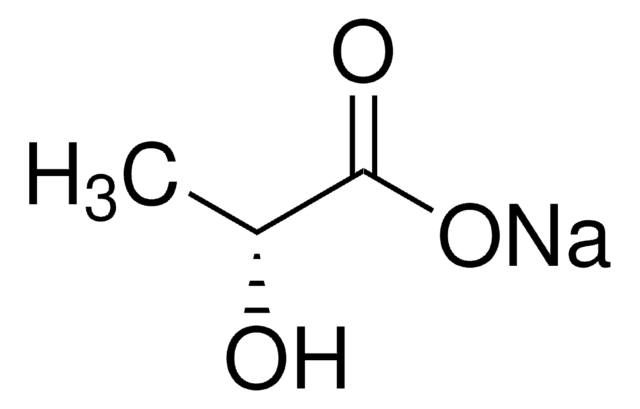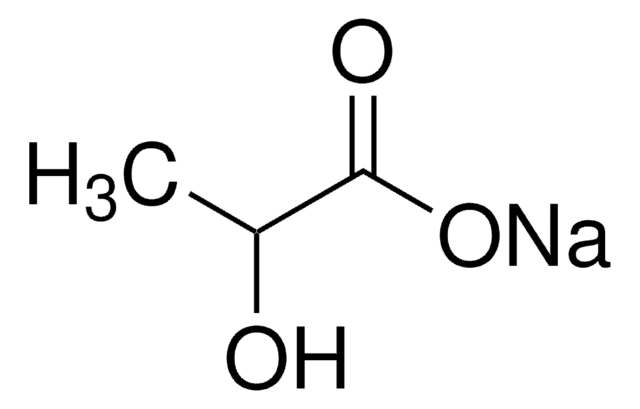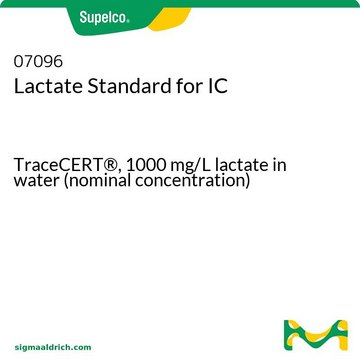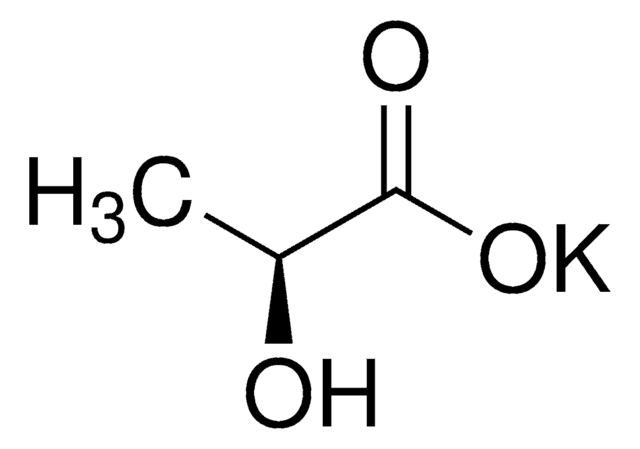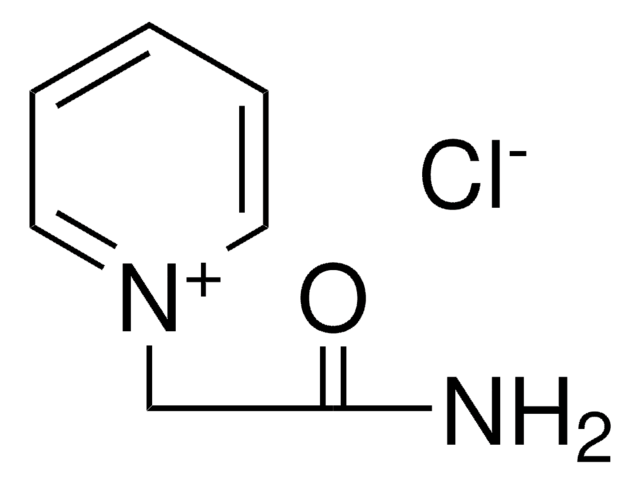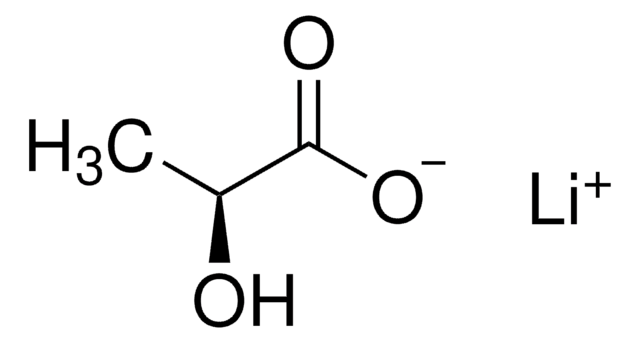L7022
Sodium L-lactate
~98%
동의어(들):
(S)-2-Hydroxypropionic acid sodium salt, L-Lactic acid sodium salt, Sarcolactic acid sodium salt
About This Item
추천 제품
생물학적 소스
synthetic (chemical)
Quality Level
분석
~98%
양식
powder or crystals
색상
white to faint yellow
mp
163-165 °C (lit.)
solubility
water: 50 mg/mL, clear, colorless
저장 온도
2-8°C
SMILES string
[Na+].C[C@H](O)C([O-])=O
InChI
1S/C3H6O3.Na/c1-2(4)3(5)6;/h2,4H,1H3,(H,5,6);/q;+1/p-1/t2-;/m0./s1
InChI key
NGSFWBMYFKHRBD-DKWTVANSSA-M
유사한 제품을 찾으십니까? 방문 제품 비교 안내
일반 설명
This multifaceted nature of Sodium L-lactate positions it as a valuable molecule for research in cellular metabolism, neuroprotection, antimicrobial, and nutritional science, where its diverse properties, including efficient energy conversion, neuroprotective effects, and potent antimicrobial activity contribute to a deeper understanding across these scientific domains.
애플리케이션
- as a medium supplement and cell fuel source for human mammary epithelial cell line(MCF10A) and dendritic cell culture
- as a gluconeogenic substrate in hepatic glucose production assay in primary hepatocytes
- in the glucose production medium for glucose production assay in human embryonic kidney (HEK293T) cells
- as a standard for calibration in lactate assay in bone marrow-derived macrophages
생화학적/생리학적 작용
특징 및 장점
기타 정보
Storage Class Code
11 - Combustible Solids
WGK
WGK 1
Flash Point (°F)
Not applicable
Flash Point (°C)
Not applicable
개인 보호 장비
Eyeshields, Gloves, type N95 (US)
이미 열람한 고객
문서
Sigma-Aldrich presents an article about how proliferatively active cells require both a source of carbon and of nitrogen for the synthesis of macromolecules. Although a large proportion of tumor cells utilize aerobic glycolysis and shunt metabolites away from mitochondrial oxidative phosphorylation, many tumor cells exhibit increased mitochondrial activity.
We presents an article about the Warburg effect, and how it is the enhanced conversion of glucose to lactate observed in tumor cells, even in the presence of normal levels of oxygen. Otto Heinrich Warburg demonstrated in 1924 that cancer cells show an increased dependence on glycolysis to meet their energy needs, regardless of whether they were well-oxygenated or not.
자사의 과학자팀은 생명 과학, 재료 과학, 화학 합성, 크로마토그래피, 분석 및 기타 많은 영역을 포함한 모든 과학 분야에 경험이 있습니다..
고객지원팀으로 연락바랍니다.
